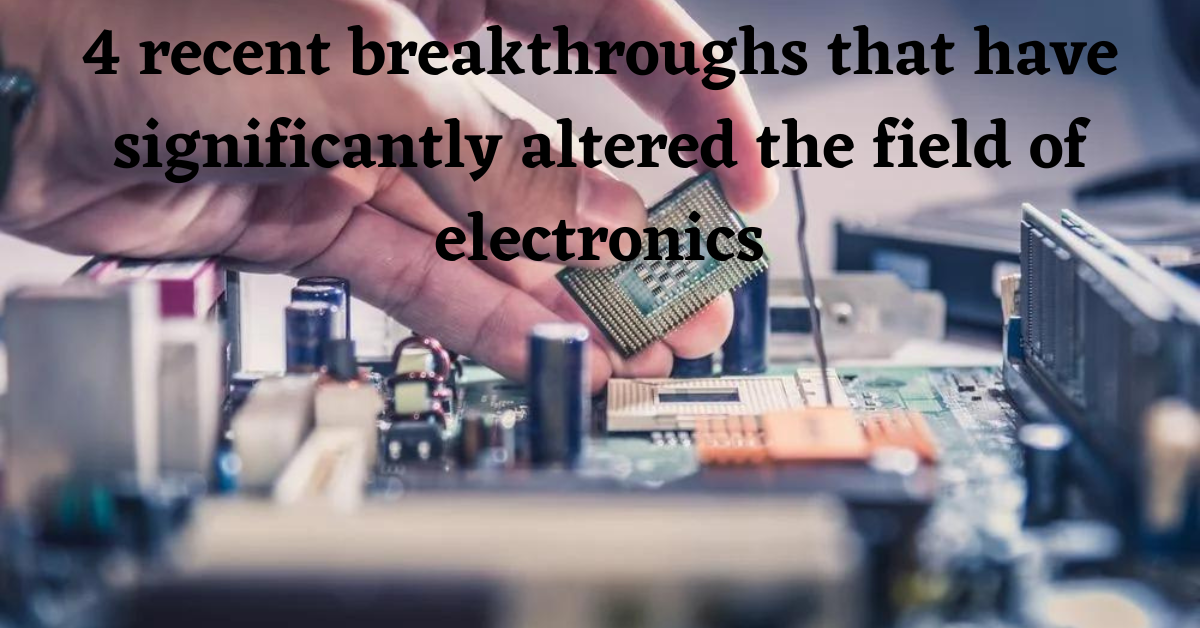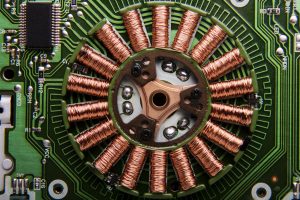
4 recent breakthroughs have significantly altered the field of electronics
Almost everything in our modern world is dependent on electronics in some way. We’ve been creating devices large and small to better our lives since we discovered how to harness the power of electricity to generate mechanical work. From electric lighting to cellphones, every item we’ve created is made up of a few components and a number of configurations. In reality, for more than a century, we’ve counted on:
- capacitors
- inductors
- a voltage source (like a battery)
- resistors
These are the fundamental components of almost all of our electronics.
Our modern electronics revolution relied on these four sorts of components plus and eventually the transistor that gave us nearly everything we use today. As we strive to miniaturize electronics, monitor more and more elements of our lives and reality, send more data with less power, and connect our gadgets to one another, we swiftly reach the boundaries of these traditional technologies. However, five developments are converging in the early 21st century, and they are already transforming our modern world. Here’s how it’s going to play out.

- Graphene development – Graphene is a one-atom-thick sheet of carbon that is bound together in a hexagonal crystal structure. It is not only the toughest substance ever created, with amazing resistance to physical, chemical, and heat stressors, but it is also the perfect atomic lattice. It also possesses remarkable conductive qualities, which implies that if electrical devices, such as transistors, could be manufactured of graphene rather than silicon, they may be smaller and faster than anything we now have. If graphene is blended into polymers, it can be transformed into a heat-resistant, stronger substance that also transmits electricity. Graphene is also about 98% transparent to light, which has revolutionary implications for transparent touchscreens, light-emitting panels, and potentially solar cells.
- Surface mount resistors – Surface-mount resistors This is the oldest of the “new” technologies, and anyone who has examined a computer or cellphone is probably familiar with it. A surface mount resistor is a thin rectangular item with conductive edges on either end, typically made of ceramic. Ceramics, which impede the flow of electric current but do not squander power or heat up as much, enabled the invention of resistors that outperformed the older, traditional resistors previously used: axially leaded resistors.
There are numerous advantages to using them:
- a circuit board with a compact footprint
- high dependability
- low dissipation of power
- inductiveness and low stray capacitance
Because of these characteristics, they are excellent for usage in modern electronic devices, particularly low-power and transportable electronics. If you need a resistor, you can use one of these SMD (surface-mounted devices) to either reduce the size required for resistors or enhance the power that can be applied to them within the same size limitations.

- Supercapacitors – Capacitors are one of the most ancient electronic technologies. They are based on a simple arrangement in which two conducting surfaces (plates, cylinders, spherical shells, etc.) are separated by a very small distance and can store equal and opposite charges. When you apply current to a capacitor, it charges, when you disconnect the current or connect the two plates, the capacitor discharges. Capacitors have numerous applications, ranging from energy storage to short bursts that release all of the energy at once.
- Superinductors – Superinductors, the last of the big three to emerge, are the newest players on the market, having only emerged in 2018. An inductor is made up of a wire coil, a current, and a magnetizable core. Inductors resist changes in the magnetic field inside of them, which means that if you try to flow a current through one, it resists for a while, then enables current to flow easily through it, and finally resists the change when the current is turned off. They are the three fundamental constituents of all circuits, along with resistors and capacitors. But, once again, there is a limit to how small they can go.

It would not be unrealistic to expect breakthroughs in the energy industry, such as energy control, energy harvesting, and energy storage, in the near future. Sensor advancements, such as physical sensors, gas sensors, and even biosensors, are also on the horizon in the near future. The biggest transformation will most likely be in wearable gadgets, such as those employed in diagnostic telemedicine applications. Many obstacles and barriers still remain. However, these challenges necessitate incremental, rather than revolutionary, changes. As connected devices and the internet of things become more popular, there is a greater need now than ever for ultra-miniaturized electronics. With recent developments in graphene technology, the future is already here in many ways.











